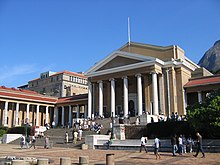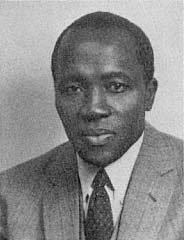
Archibald Campbell Mzolisa "A.C." Jordan was a novelist, literary historian and intellectual pioneer of African studies in South Africa.

The University of Cape Town (UCT) is a public research university in Cape Town, South Africa. Established in 1829 as the South African College, it was granted full university status in 1918, making it the oldest university in South Africa and the oldest university in Sub-Saharan Africa in continuous operation.
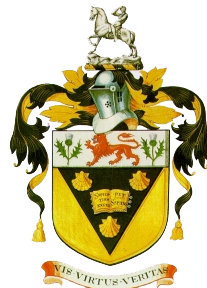
Rhodes University is a public research university located in Makhanda (Grahamstown) in the Eastern Cape Province of South Africa. It is one of four universities in the province.
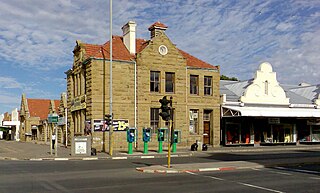
Aliwal North is a town in central South Africa on the banks of the Orange River, Eastern Cape Province. It is a medium-sized commercial centre in the northernmost part of the Eastern Cape. The Dutch Reformed Church was built in 1855.
The South African College Schools is a public English medium primary and high education institution situated in Newlands - part of the Southern Suburbs region of Cape Town in the Western Cape province of South Africa. Founded in 1829, it is the oldest continuously run school in South Africa.

Rondebosch Boys' High School is a public English medium high school for boys situated in the suburb of Rondebosch in Cape Town in the Western Cape province of South Africa. It is one of the oldest schools in the country, having been established in 1897. Rondebosch is the only school in the Western Cape to have a Nobel Prize laureate, Allan M. Cormack in Physiology and Medicine.

Wynberg is a southern suburb of the City of Cape Town in Western Cape, South Africa. It is situated between Plumstead and Kenilworth, and is a main transport hub for the Southern Suburbs of Cape Town.

Observatory is a suburb in Cape Town, South Africa, colloquially known as Obs. Bordered by Mowbray to the south and Salt River to the northwest, the area is best known as a student neighbourhood associated with the nearby University of Cape Town and Groote Schuur Hospital. It takes its name from the South African Astronomical Observatory headquarters, built in 1829 by the Royal Observatory.
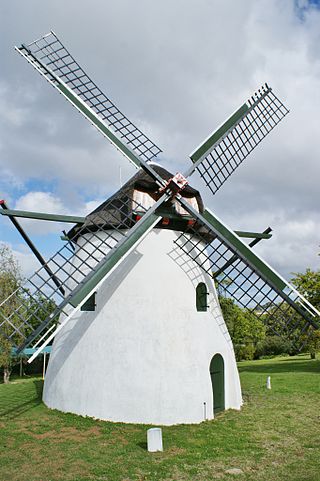
Mostert's Mill is a historic windmill in Mowbray, Cape Town, South Africa. It was built in 1796 and is the oldest surviving complete windmill in South Africa. It was almost completely destroyed by a wildfire on 18 April 2021 but was fully restored by April 2024 and is once more operational and used to grind wheat into whole meal, using the power of the wind. The oldest windmill in South Africa is the De Nieuwe Molen mill in Cape Town, built in 1782.

Sir Christoffel Joseph Brand was a Cape jurist, politician, statesman and first Speaker of the Legislative Assembly of the Cape Colony.
Thomas Rajna was a British pianist and composer of Hungarian birth. He had been domiciled in Cape Town in South Africa since 1970.
Professor Désirée Talbot was a South African opera soprano and one of the founding members of the UCT Opera Company.

Jacob Abraham Uitenhage de Mist was a Dutch statesman. He was the Head of State of the National Assembly of the Batavian Republic from 17 April 1797 – 1 May 1797, and Commissioner-General of the Cape Colony during the Interregnum from 21 February 1803 – 25 September 1804, in accordance with the short-lived Treaty of Amiens. The Cape Colony had been under Dutch control from 1652.

The Maynardville Open-Air Theater is an outdoor theatre in Maynardville Park, Wynberg, Cape Town, South Africa. It seats 720 people and is known for its annual Shakespeare in the Park plays.

The Ikey Tigers are a South African rugby union team from the University of Cape Town in the Western Cape who compete in the FNB Varsity Cup.
The following is a timeline of the history of Cape Town in the Western Cape province of South Africa.

University of Cape Town Libraries is the library system of the University of Cape Town in Cape Town, South Africa.

Rhodes Must Fall was a protest movement that began on 9 March 2015, originally directed against a statue at the University of Cape Town (UCT) that commemorates Cecil Rhodes. The campaign for the statue's removal received global attention and led to a wider movement to "decolonise" education across South Africa. On 9 April 2015, following a UCT Council vote the previous night, the statue was removed.
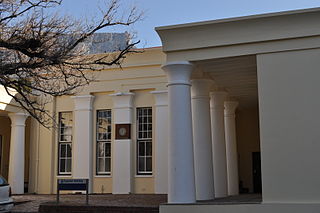
The Egyptian Building is the home of University of Cape Town's Michaelis School of Fine Art on that school's campus on Orange Street in Cape Town, South Africa.

The Montebello Design Centre is a non-profit art and craft space established in 1993 and located in Newlands, Cape Town, South Africa. The centre hosts over twenty craft workshops, shops, restaurants, and artist studios.
















